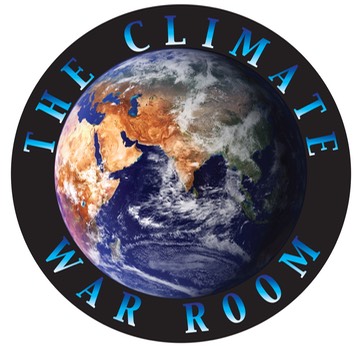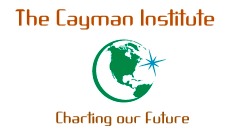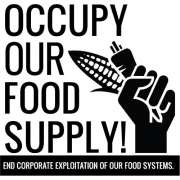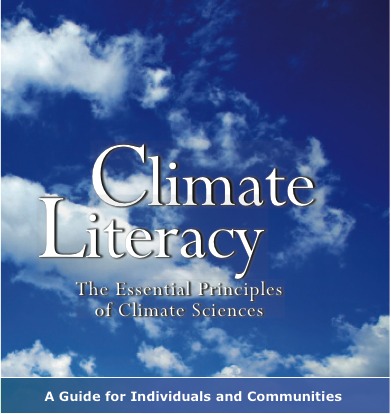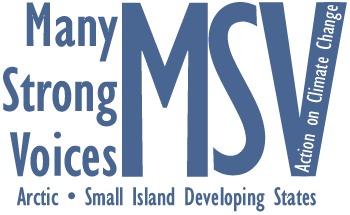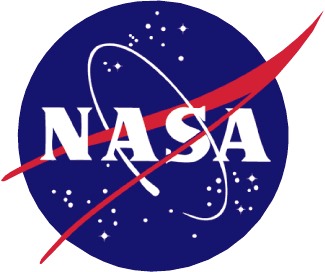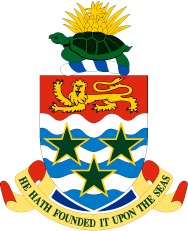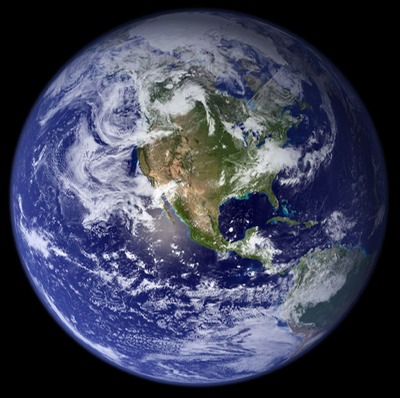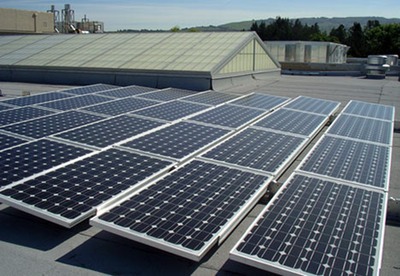Water Security and Climate Change in The Cayman Islands
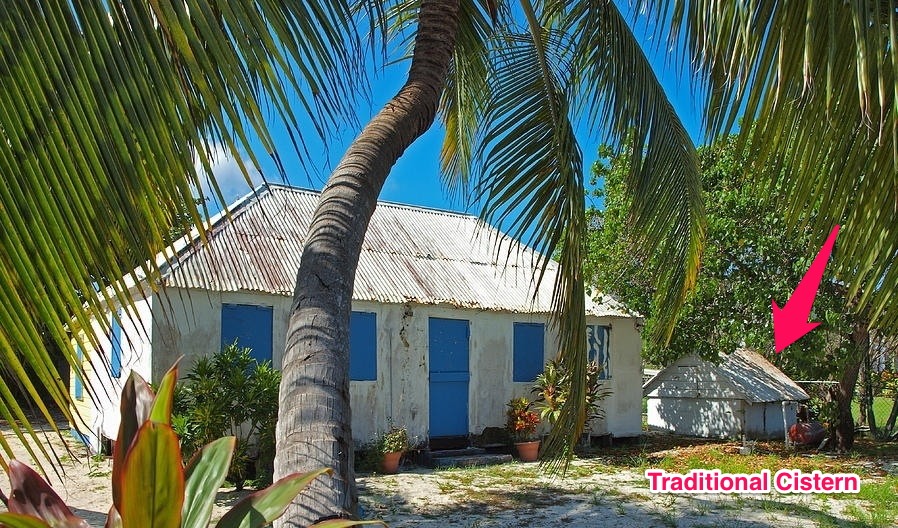
The Cayman Islands being situated in the North-West Caribbean and having no rivers or lakes are vulnerable to water insecurity.
Traditional Caymanian homes were built with a cistern or tank beside the house being fed by gutters from the roof. A hand pump would often be used to pump water up ten to fifteen to a barrel or two to supply gravity fed water in the house.
As water usage patterns have changed, with modern households having washing machines [rather than a wash tub) dishwashers, showers and all the modern conveniences, their water usage has gone up tremendously. As a result of these changes it has become easier and cheaper to connect homes to the city piped water supply and avoid the cost of constructing a cistern.
As a result of being connected to the city water system is has also become very easy to ignore ones water usage, allowing even higher consumption. In the old days homeowners would, as a matter of habit, check the water level of their cisterns and cast their eyes on the heavens to see if there was any rain clouds in sight.
It was also a tradition in the Cayman Islands to have a well beside each home. Many of these well produced water that was, if not fresh, at least had low enough salt levels to be drinkable.
Today the Cayman Islands has a very impressive water production and distribution system. There is piped potable water to the entire island with a daily production for Grand Cayman of 37,500 cubic meters per day against a daily consumption of 18,800 cubic meters. The total storage capacity is 79,115 cubic meters per day. Doing the math tells me that at any given time we have a four-day supply of water.
However, there are vulnerabilities in the system. Some of these vulnerabilities are related to the price of fossil fuel, as all of the potable water available, with few exceptions, is produced using energy intensive reverse osmosis, which is powered by electricity. If electrical production is interrupted by a hurricane or other disaster water cannot be produced or distributed. If the price of fossil fuel rises due to conflict in a oil producing state the cost of water would rise accordingly. Such a price rise may make water unaffordable to some sectors of society.
Given that the total rainfall in these islands is on the order of 3.4 Billion cubic meters per year it would seem logical to capture or harvest some of this free resource. In Malta it has been determined that it would be possible to capture / harvest 3490 Acre/Feet of water from runoff [from roads, parking lots and other non-permeable surfaces.] This equates to 40% of Malta's water demand. Water Harvesting and Water Collection Systems in the Mediterranean Area. The Case of Malta
The Intergovernmental Panel on Climate Change (IPCC) points towards a great vulnerability of freshwater for industry resources as a result of climate change, with severe consequences for economic, social and ecological systems (IPCC,2008; IPCC, 2012). The effect on water security will differ supply for ecosystems and for domestic use regionally and will depend upon a number of factors, including geographic location and features, conditions of water availability and utilization, demographic changes, existing management and allocation systems, legal frame-works for water management and existing governance structures.
If the Cayman Islands Government wanted to be proactive they would draft and implement a Water Policy to ensure that the awkward questions are asked and answered.
• Should cisterns be mandated for all new construction?
• Should public water harvesting be implemented to supplement and perhaps reduce the cost of the mains supply?
• Should gray-water harvesting be implemented to be used for landscaping uses?
The UN ECLAC Report Regional Climate Modeling in the Caribbean report states;
The patterns of change in annual rainfall (figure 7) indicate a general future trend to drier conditions in various areas of the Caribbean sub region. However, PRECIS_Had projects a significant reduction of rainfall in the latitudinal band encompassing the Caribbean Sea, Central America and part of the western half of northern South America. Regional Climate Modeling in the Caribbean - UN ECLAC LC/CAR/L.265 10 June 2010
Rainwater harvesting from rooftop catchments
Rainwater harvesting is used extensively in Latin America and the Caribbean, mainly for domestic water supply and, in some cases, for agriculture and livestock supplies on a small scale. In Brazil and Argentina, rainwater harvesting is used in semi-arid regions. In Central American countries like Honduras (see case study in Part C, Chapter 5), Costa Rica, Guatemala, and El Salvador, rainwater harvesting using rooftop catchments is used extensively in rural areas.
In Saint Lucia, storage tanks are constructed of a variety of materials, including steel drums (200 l), large polyethylene plastic tanks (1 300 to 2 300 l), and underground concrete cisterns (100 000 to 150 000 l).
The Turks and Caicos Islands have a number of government-built, public rainfall catchment systems. Government regulations make it mandatory that all developers construct a water cistern large enough to store 400 l/m2 of roof area.
Rooftop and artificially constructed catchments, such as the one at the former United States naval base on Eleuthera, are commonplace in the Bahamas. One settlement (Whale Cay) has a piped distribution system based on water captured from rooftops. On New Providence, most of the older houses collect rainwater from rooftops and store it in cisterns with average capacities of 70 000 l. Industries also use rooftop rainwater, and a preliminary assessment has been made of using Nassau International Airport as a catchment. In multistoried apartment buildings and other areas serving large concentrations of people (such as hotels and restaurants), water supplies are supplemented by water from rooftop catchment cisterns.
The Islas de la Bahía off the shores of Honduras meet a substantial portion of their potable water needs using rainwater from rooftop catchments. Similarly, rooftop catchments and cistern storage provide a significant water supply source for a small group of islands off the northern coast of Venezuela.
In a recent rural water-supply study, the continued use of rooftop and artificially constructed catchments was contemplated for those parts of rural Jamaica lacking access to river, spring, or well water sources. It is thought that more than 100 000 Jamaicans depend to a major extent on rainwater catchments.
http://www.oas.org/dsd/publications/Unit/oea59e/ch10.htm
In Malta the FAO has recommended 'widespread use of local and decentralized solutions' (e.g. rainwater cisterns, grey-water recycling, and pollution control).
Conclusion
In the short-term the Cayman Islands are resilient to the effects of climate change on rainfall patterns in the Northwest Caribbean because of their water production infrastructure.
However, if the cost of petroleum escalates over the next decade there could possibility be a significant percentage of the population unable to afford to purchase water. The European Commission's Environment Agency states; 'The efficient use of water and effective management of natural water resources in a world where water resources are under significant pressure is about ensuring that natural water resources are sustained in terms of quality and quantity to meet the needs of humans, nature and the economy through integrated management'. 2010 Water Scarcity and Droughts
